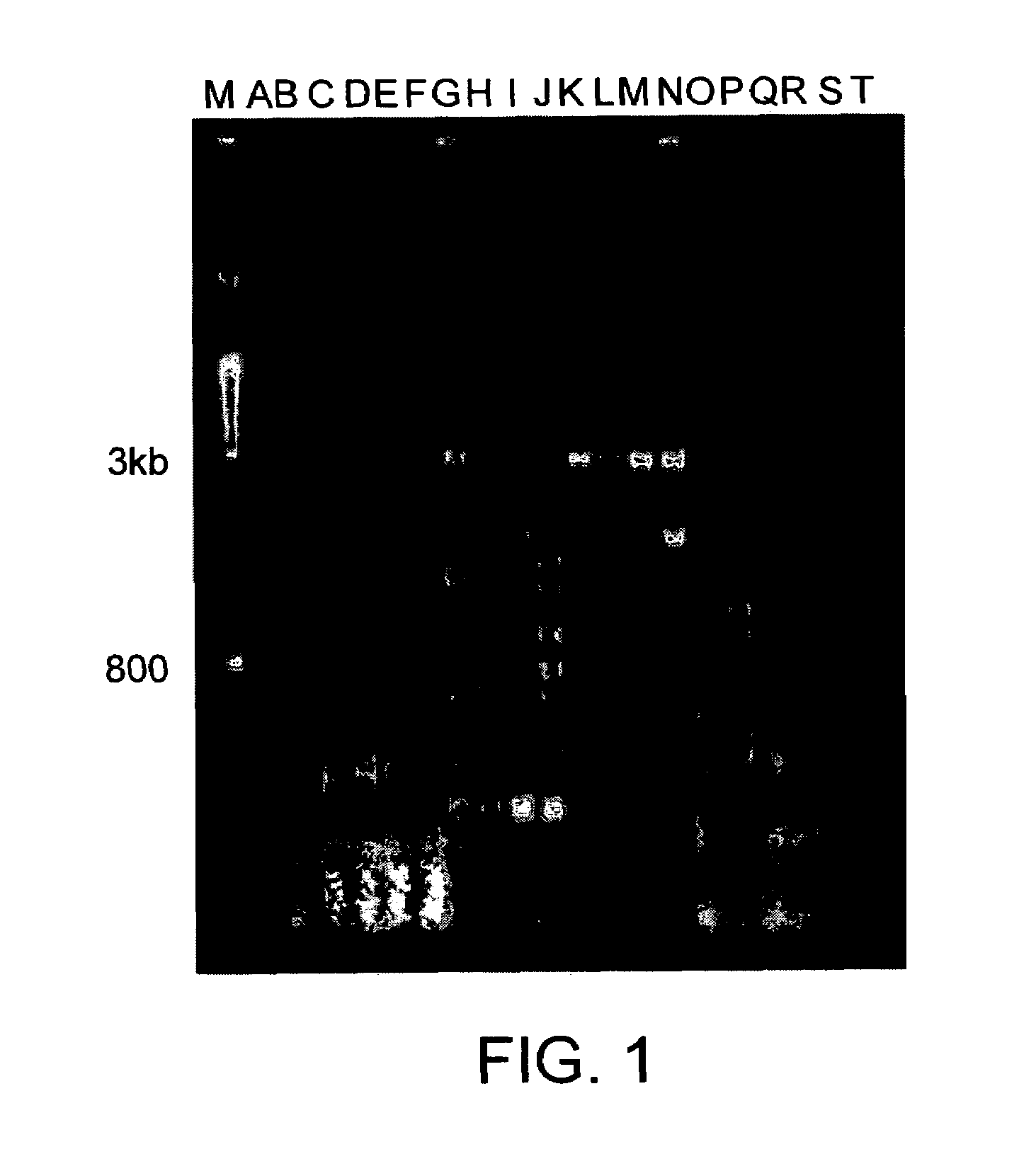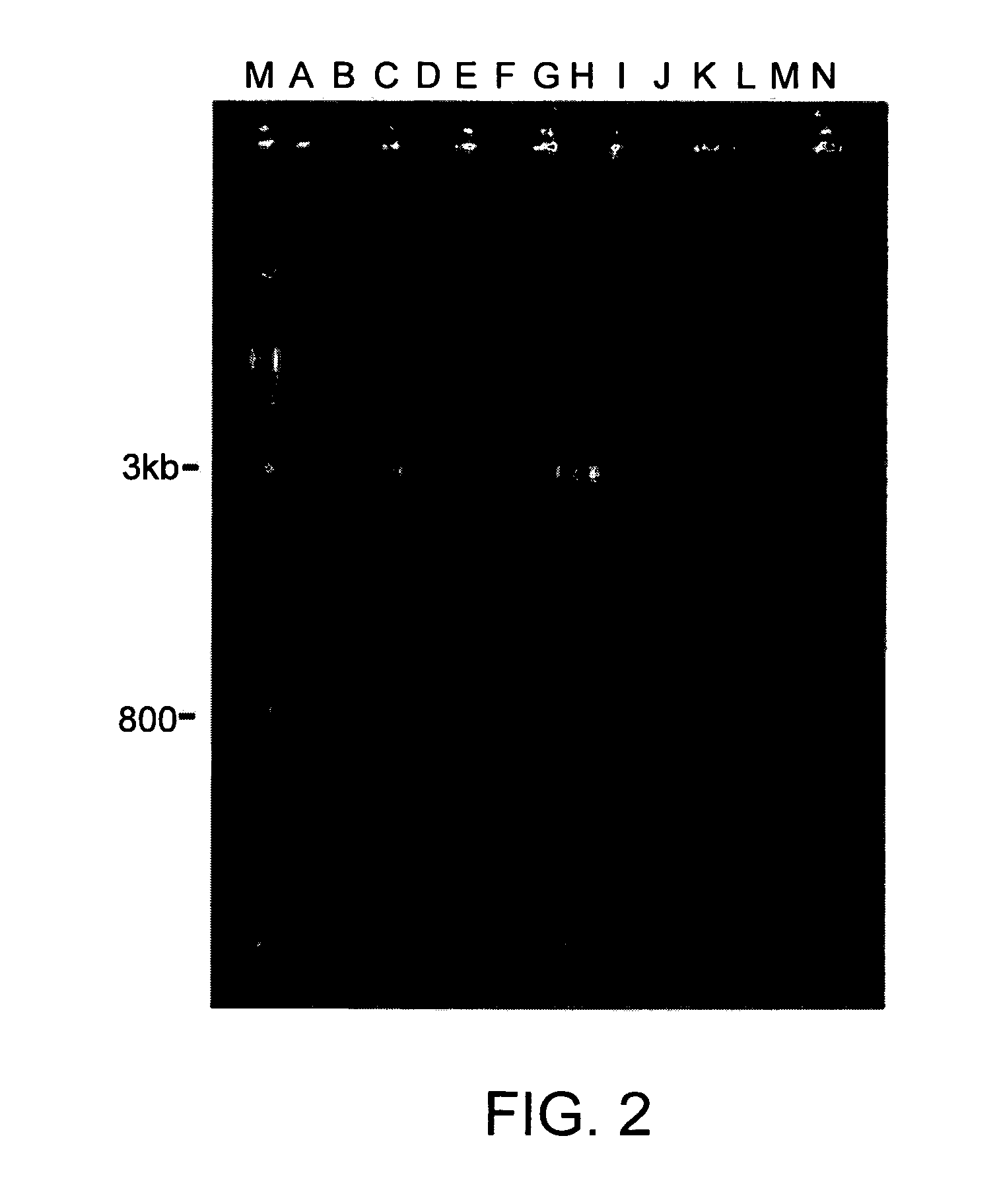Methods using four-layer filter for PCR sample preparation
a four-layer filter and sample preparation technology, applied in the field of biological material detection, can solve the problems of low amplification efficiency, failure to find and inability to detect extreme sequence variants of those species
- Summary
- Abstract
- Description
- Claims
- Application Information
AI Technical Summary
Benefits of technology
Problems solved by technology
Method used
Image
Examples
example 1
Methods
[0143]An automatable protocol for detecting almost any virus, particularly sequence variants of known virions or previously undescribed virions or similar moieties in human serum or other biological fluid.
[0144]Applications: Applications include, but are not limited to, field studies of virions or routine diagnostics. In mass surveys, the detection of sequence variants of known virions or previously undetected virions or other nucleic acid containing moieties in biological fluids by a protocol that is highly automatable and thus amenable to massed screenings and discovery.
[0145]In one embodiment, this protocol is particularly useful for surveying serum produced by centrifugation or by the filtering device proposed by the present invention, but is not limited to the use of serum or to the device of the present invention.
[0146]This embodiment of the present invention is amenable to distance-collection and is highly automatable with an extremely useful and very broad application...
example 1a
[0159]In this example, the primer sequences were from known virions (Table 2), but conditions of slightly lower stringency were used, such that many unrelated sequences were also amplified (FIG. 1). The sequences of the primers are derived from sequences from the published hepatitis C genome and were used to amplify nucleic acids in human serum. One of ordinary skill in the art can obtain additional hepatitis C sequences, or sequences from a wide range of nucleotide sequences of interest from various species, which have been deposited in BLAST or a similar nucleotide database.
[0160]
TABLE 2Primer sequences used for amplifications in FIG. 1.SamplePrimer CombinationsDMSO (%)AHepCP2 & HP60BHepCP2 & HP60CHepCP2 & HP60DHCP2 & HCP10EHCP2 & HP60FHCP2 & HP70GHepCP2 & HP61HHCP2 & HCP11IHCP2 & HP61JHCP2 & HP71KHepCP2 & HP62LHCP2 & HCP12MHCP2 & HP62NHCP2 & HP72OHepCP2 & HP63PHCP2 & HCP13QHCP2 & HP63RHCP2 & HP73SHepCP2 & HP60THepCP2 & HP60
[0161]In this Example, serum from a human containing the ...
example 1b
[0166]Although similar bands might possibly be obtained from random primers, random primers would be expected to block the DNA array badly or with insufficient discrimination. Therefore, non-random primers are preferred, even non-random, unrelated primers, such as those listed in Table 3, which were used to obtain the results shown in FIG. 2. The sequences of the primers used as “non-specific” primers for purposes of this set of amplifications are derived from sequences from the published hepatitis C genome and the CVB genome and were used to amplify nucleic acids in human serum. One of ordinary skill in the art can obtain additional hepatitis C and CVB sequences deposited in a nucleotide database, such as BLAST, as can other types of specific or non-specific sequences according to the needs of the researcher.
[0167]
TABLE 3Primer sequences used for amplifications in FIG. 2.PrimerAnnealingSample1st Strand PrimerCombinationTemp. (° C.)AHepCHepCFSPHCP2 & HCP148BHepCHepCFSPHCP2 & HP748CH...
PUM
| Property | Measurement | Unit |
|---|---|---|
| particle size | aaaaa | aaaaa |
| detergent | aaaaa | aaaaa |
| composition | aaaaa | aaaaa |
Abstract
Description
Claims
Application Information
 Login to View More
Login to View More - R&D
- Intellectual Property
- Life Sciences
- Materials
- Tech Scout
- Unparalleled Data Quality
- Higher Quality Content
- 60% Fewer Hallucinations
Browse by: Latest US Patents, China's latest patents, Technical Efficacy Thesaurus, Application Domain, Technology Topic, Popular Technical Reports.
© 2025 PatSnap. All rights reserved.Legal|Privacy policy|Modern Slavery Act Transparency Statement|Sitemap|About US| Contact US: help@patsnap.com


